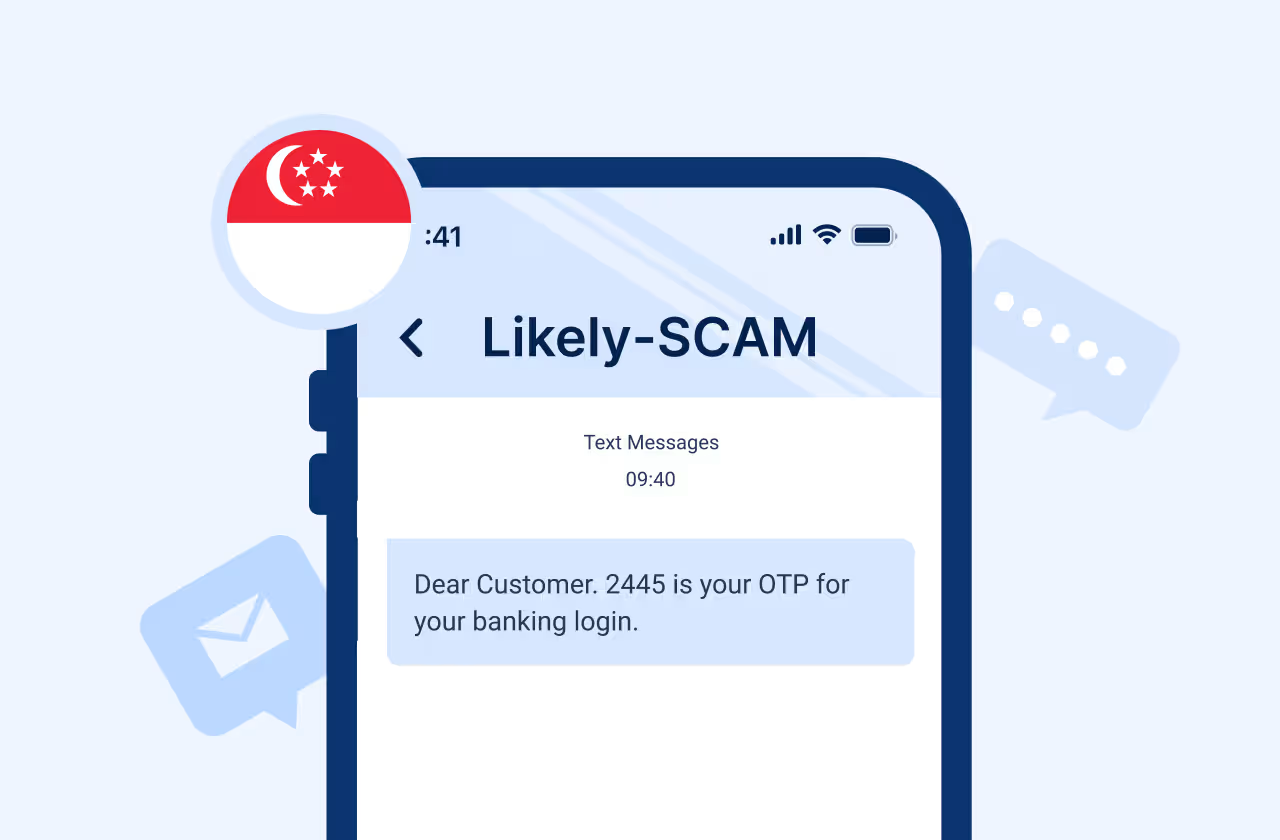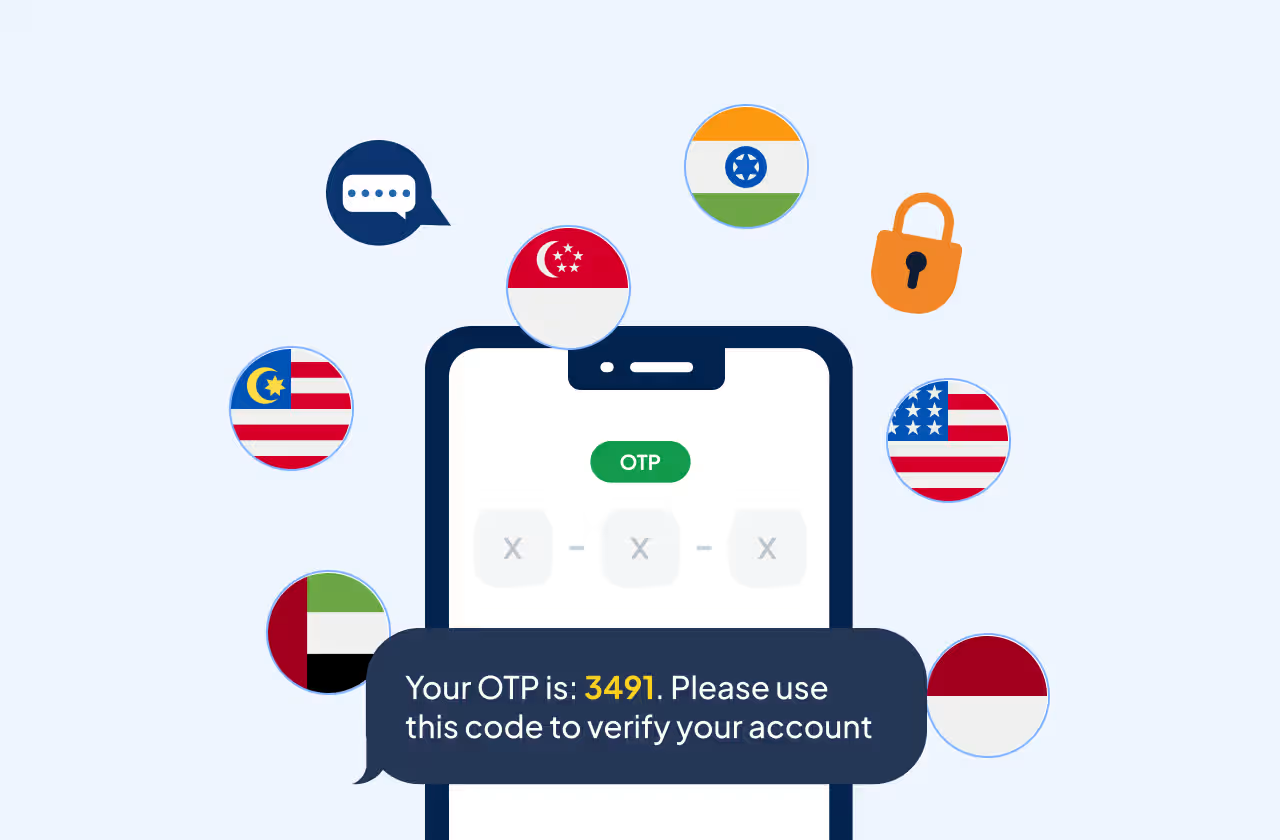Key Takeways
SMS spoofing is a malicious practice where scammers send text messages that appear to be from a trusted source.
This can lead to: -
a. Variety of cyber threats,
b. Identity theft,
c. Financial loss and even
d. large-scale corporate breaches.
Understanding what SMS spoofing is, how it works and how to protect against it is crucial for both individuals and businesses.
What is SMS Spoofing?
What: SMS spoofing is a cyber-attack where the sender's identity is falsified to appear as someone trusted, like a bank or a friend.
How: It's commonly seen In SMS phishing attacks, where fraudulent messages trick recipients into clicking malicious links or providing sensitive information. SMS phishing specifically targets individuals by sending fake messages which look authentic. These lead to fraudulent websites designed to capture sensitive details like passwords or credit card numbers.
Objective: The goal is often to steal personal data or install harmful software on the victim's device.
How Does SMS Spoofing Work?
- Altering Sender ID
SMS spoofing hides the true identity of the sender by altering the sender ID displayed on the recipient's phone. Scammers use tools to make the message appear as if it's coming from a trusted source, like a real business, financial institution or even a compromised personal contact.
- SMS Fraud
Scammers might send SMSs like an OTP SMS (One-Time Password) that appears to come from your bank, asking you to verify a transaction. If you comply, the scammer gains access to your account, leading to potential fraud and compromising your financial security.
- Masked Identity
The spoofed message may originate from another victim’s mobile phone or a software platform that allows attackers to mask their real identity. This makes the recipient more likely to trust the message, unknowingly clicking on links or following instructions that compromise their security.
The Impact of SMS Spoofing on Businesses

- Data Breach Risk
Businesses handling sensitive data are particularly vulnerable to SMS spoofing. If an employee falls victim, it can result in a security breach, exposing customer data, proprietary information and critical business operations to harmful actors.
- Internal System Compromise
If an employee clicks on a spoofed link, fraudsters might gain access to the company's internal systems. This could lead to a data breach, introduction of malware or even a complete shutdown of the company’s digital infrastructure through ransomware attacks.
Even for simple use cases like OTP authentication, businesses should adhere to techniques for OTP SMS fraud prevention.
- Wider Spread of Spoofed Messages
Attackers could use compromised contact information to send more spoofed messages to other employees, customers, or partners further expanding their reach and potential damage. This leads to loss of consumer trust, legal liabilities and significant financial costs for the business.
Types of SMS Spoofing Attacks
- Fake Sender ID
In this type of attack, the scammer uses a trusted sender ID to mask their true identity. The message might appear to come from a well-known business or even someone in your contact list. The goal is to increase the likelihood that the recipient will follow the instructions provided, such as clicking on a link or providing sensitive information.
- Unsolicited Bulk Messages
Often resembling spam, these messages are sent in bulk to a large number of recipients. They are promotional SMS, fake news or other content designed to lure recipients into clicking on a malicious link. The sender hopes that even a small percentage of recipients will fall for the scam, leading to a significant impact.
- Fake Money Transfers
Scammers often use spoofed messages to trick victims into believing they have received or need to transfer money. The message might appear to come from a bank in the form of SMS payments or payment service like PayPal, asking the recipient to click a link to confirm a transaction. The goal is to steal bank account information or other financial details.
- Harassment
Harassment through SMS spoofing can occur when a scammer has already obtained some of your personal information. They might send threatening messages, demand money or try to manipulate you into taking a specific action. These messages can be distressing and may even involve attempts to extort money from the victim.
- Corporate Espionage
This type of attack targets businesses, particularly large corporations with valuable data. The scammer might send messages that appear to be from within the company, such as a request to reset a password or update account details. Once the recipient complies, the attacker gains access to internal systems, leading to potential data breaches or other forms of corporate espionage.
- Identity Theft
Identity theft through SMS spoofing involves tricking the recipient into providing personal information, such as social security numbers, credit card details or passwords. The scammer then uses this information to impersonate the victim, potentially causing significant financial harm or damage to the victim's reputation.
Preventing SMS Spoofing
Preventing SMS spoofing requires a combination of awareness, education, and proactive measures. Here are some strategies to protect yourself and your business
- Educate Employees
Ensure that all employees are trained to recognize the signs of SMS spoofing. This includes taking preventive measures for smishing, being cautious of messages with suspicious wording, unfamiliar numbers, spelling errors or unusual requests. Employees should know never to click on links or provide sensitive information without verifying the source.
- Implement Strong Authentication Measures
Use two-factor authentication (2FA) and other strong authentication & verification methods to protect access to sensitive systems and data. This adds an extra layer of security, making it more difficult for scammers to gain unauthorized access.
- Verify Messages
Always verify the legitimacy of a message before taking any action. If a message seems suspicious, contact the sender directly using a trusted phone number or email address to confirm its authenticity. Do not rely solely on the information provided in the text message.
- Use Trusted SMS Providers
Work with SMS providers like Message Central that prioritize SMS compliance and security and others. A reputable provider will have measures in place to detect and prevent spoofing, reducing the risk of fraudulent messages reaching your customers.
- Monitor for Unusual Activity
Regularly monitor your systems for signs of unusual activity, such as unexpected login attempts or changes in account settings. Early detection of potential breaches can help mitigate the damage caused by SMS spoofing.
- Engage in Proactive Communication
Keep your customers informed about your communication practices. Let them know what types of text messages they can expect from you and encourage them to report any suspicious messages. This helps build trust and makes it easier to identify and respond to spoofing attempts.
Conclusion
SMS spoofing is a serious threat that can have devastating consequences for individuals and businesses alike. By understanding how spoofing works and taking proactive steps to prevent it, you can protect yourself and your organization from falling victim to these malicious attacks.










